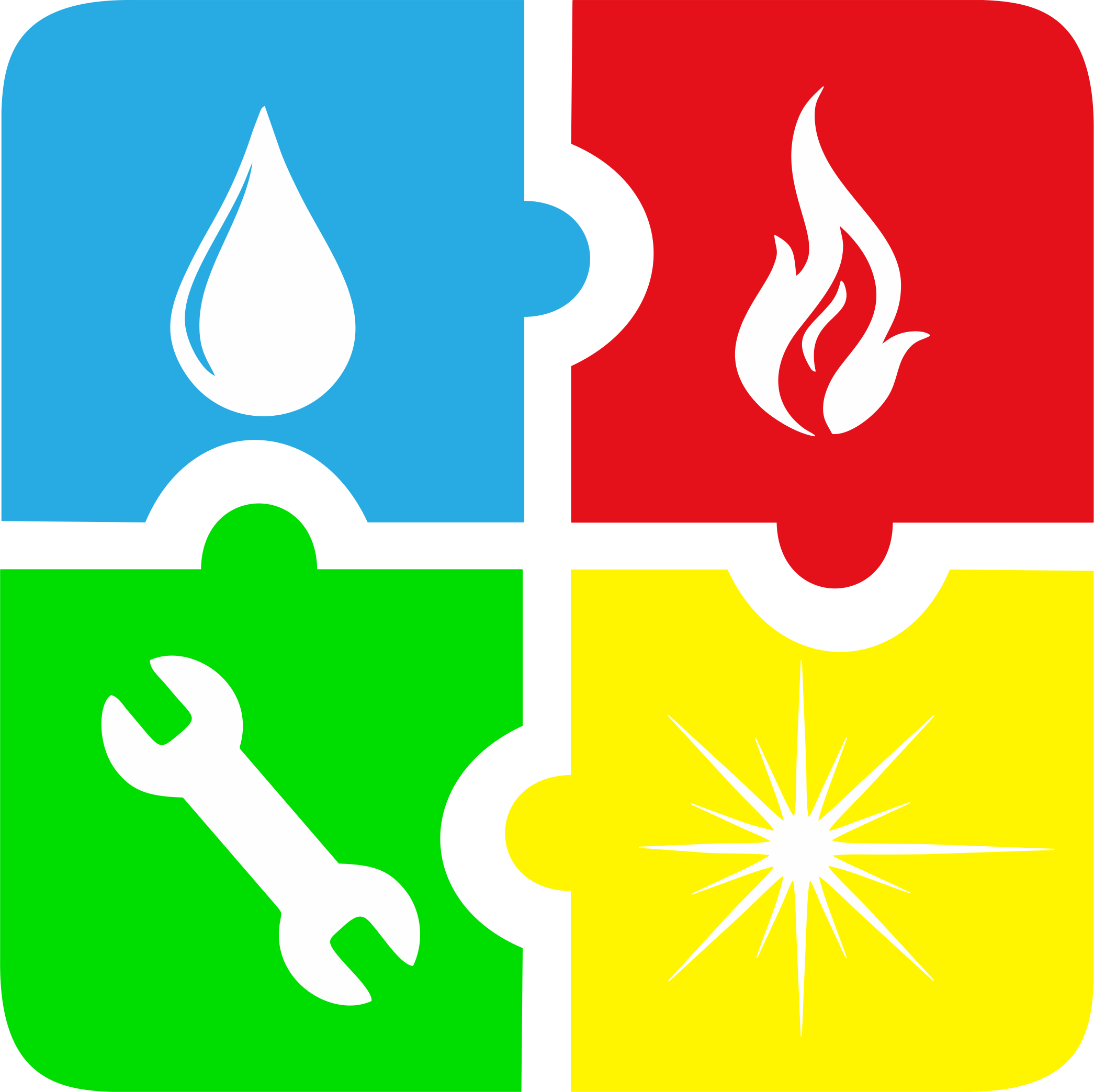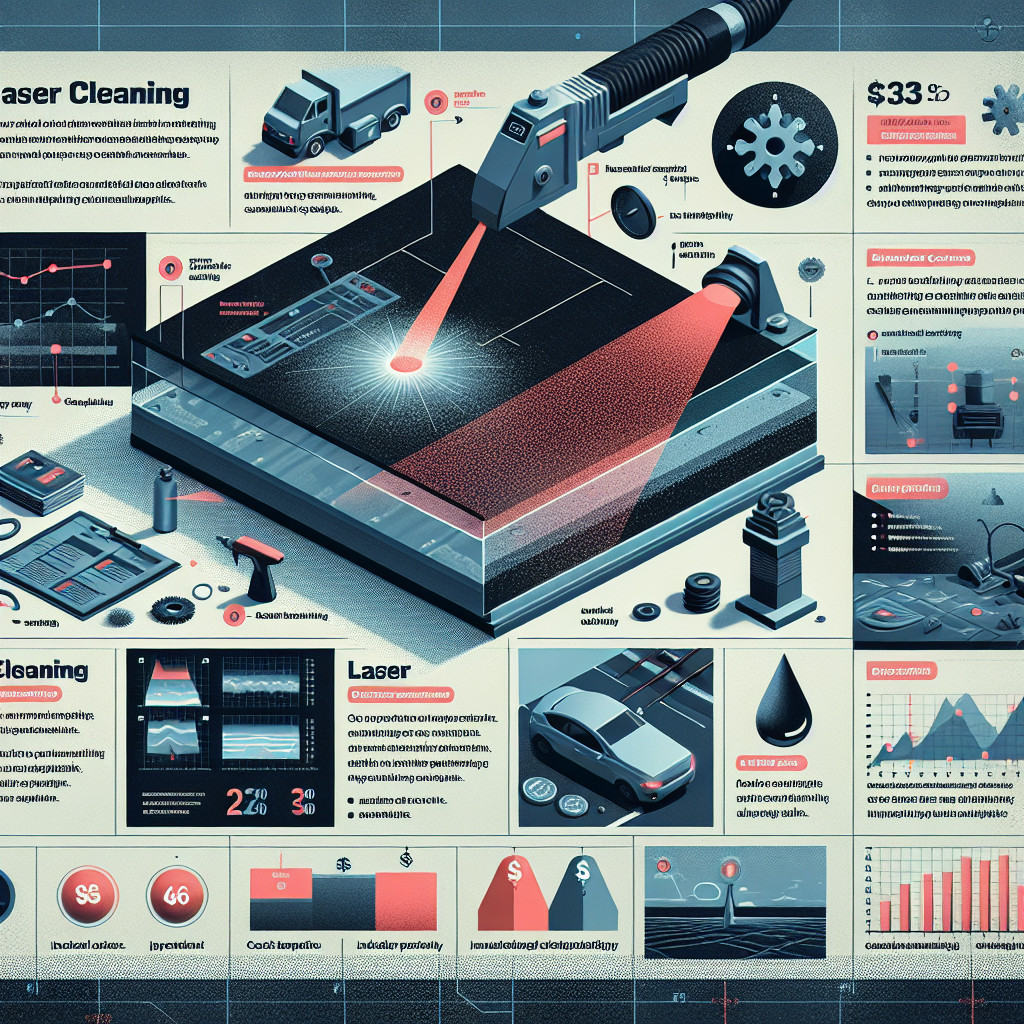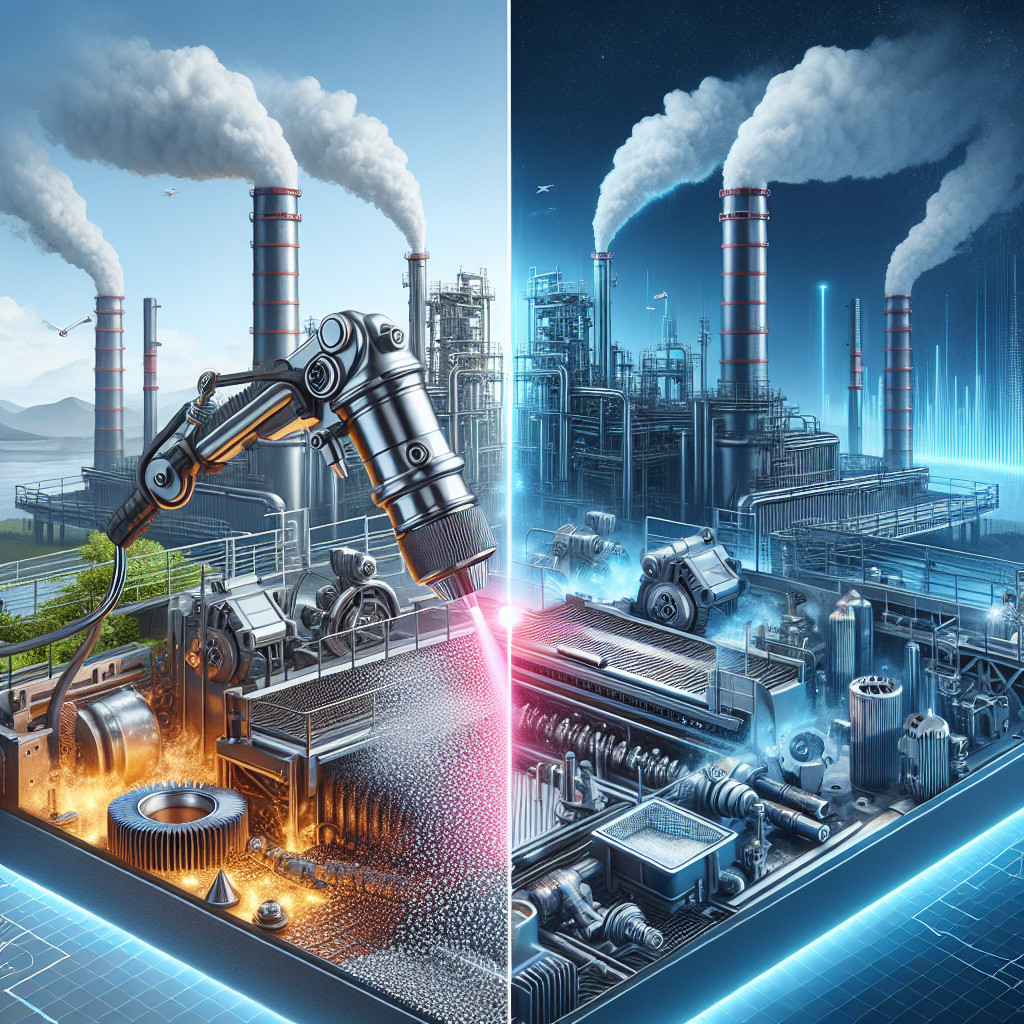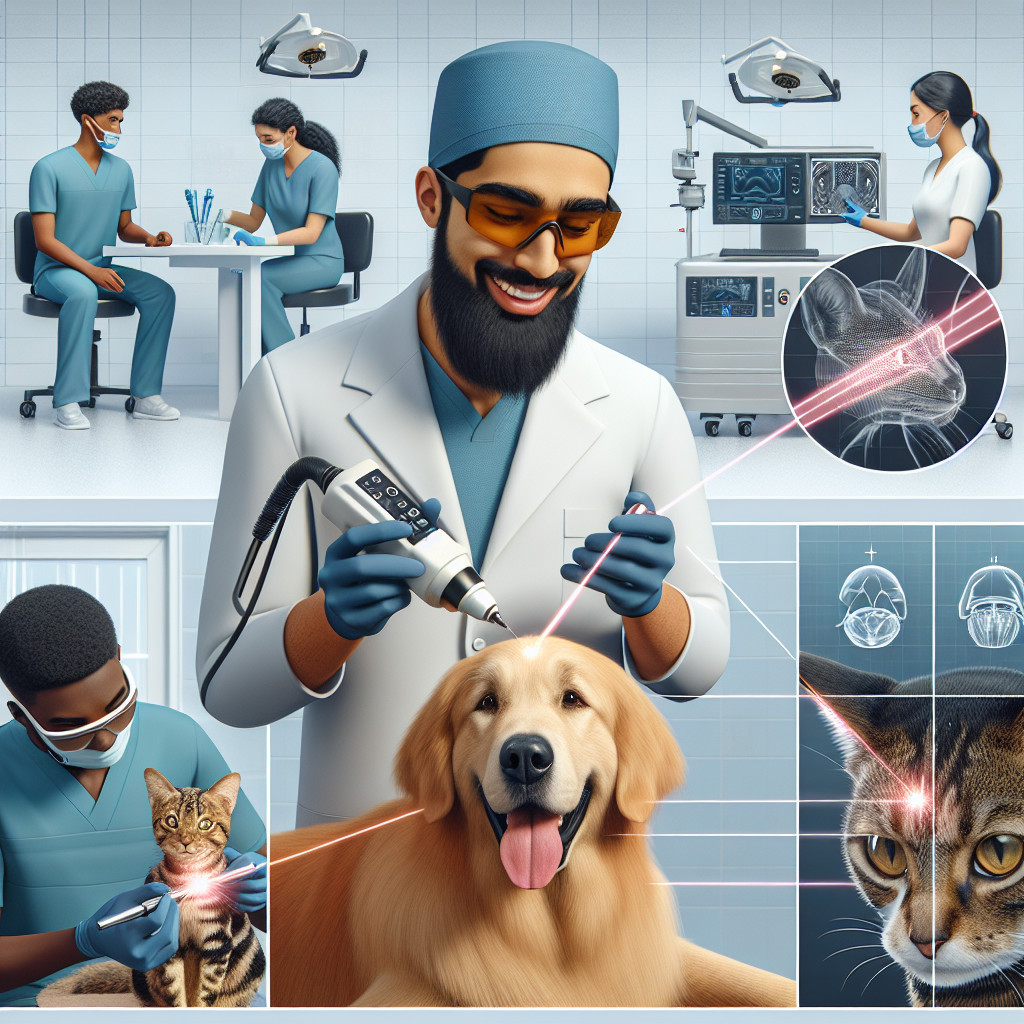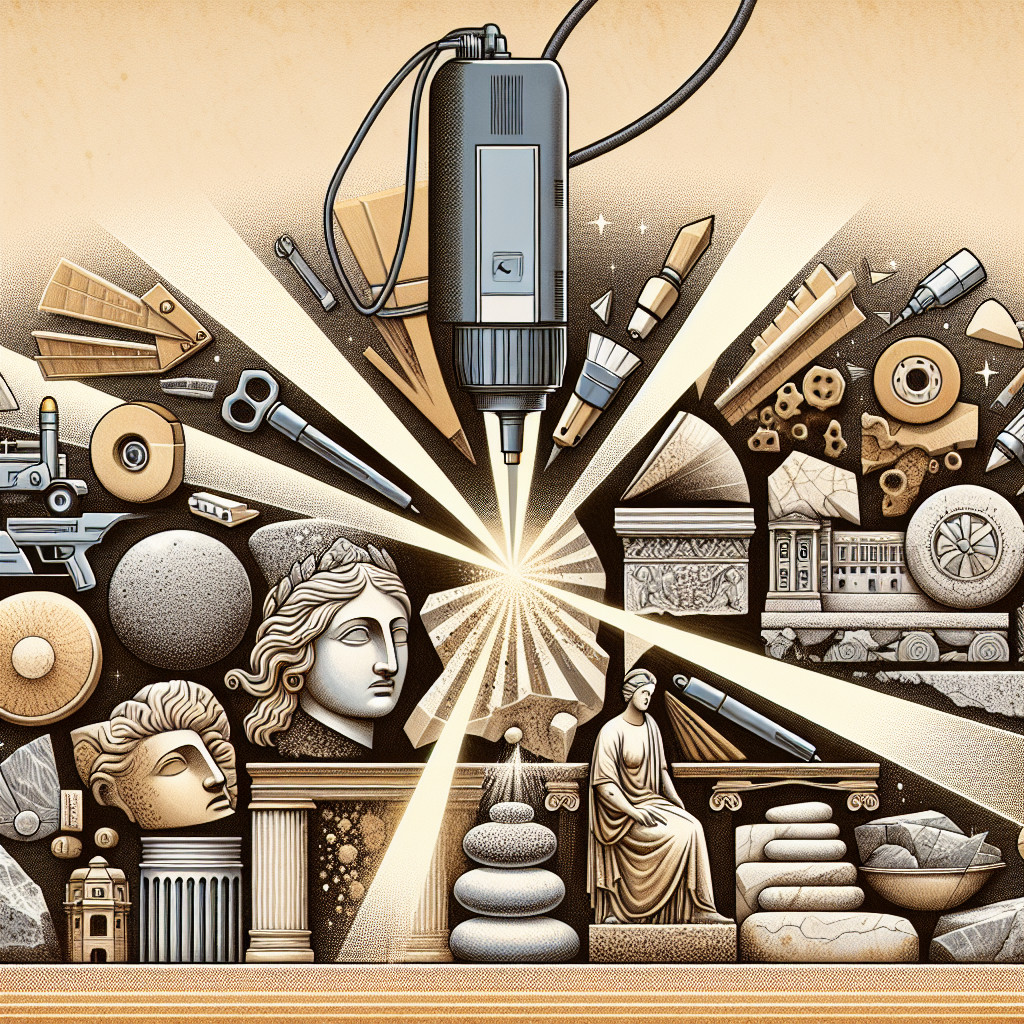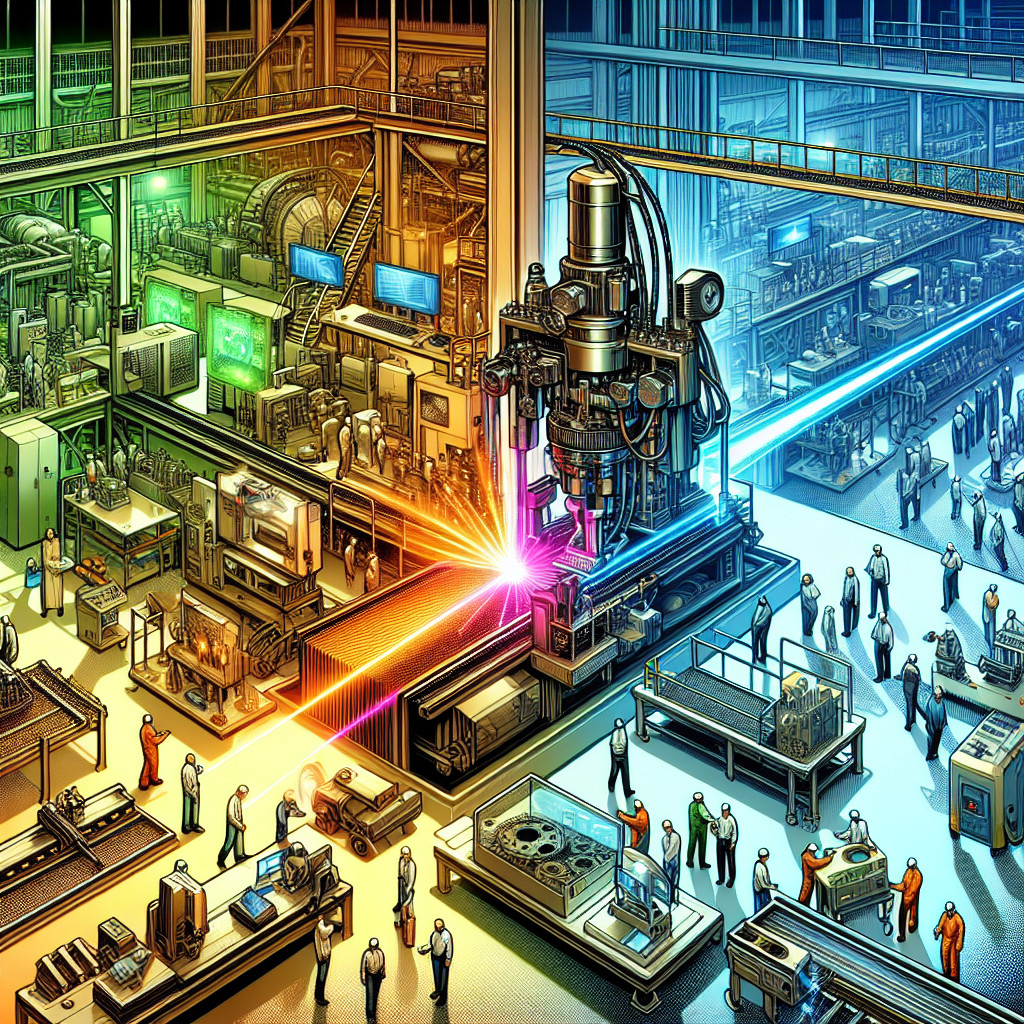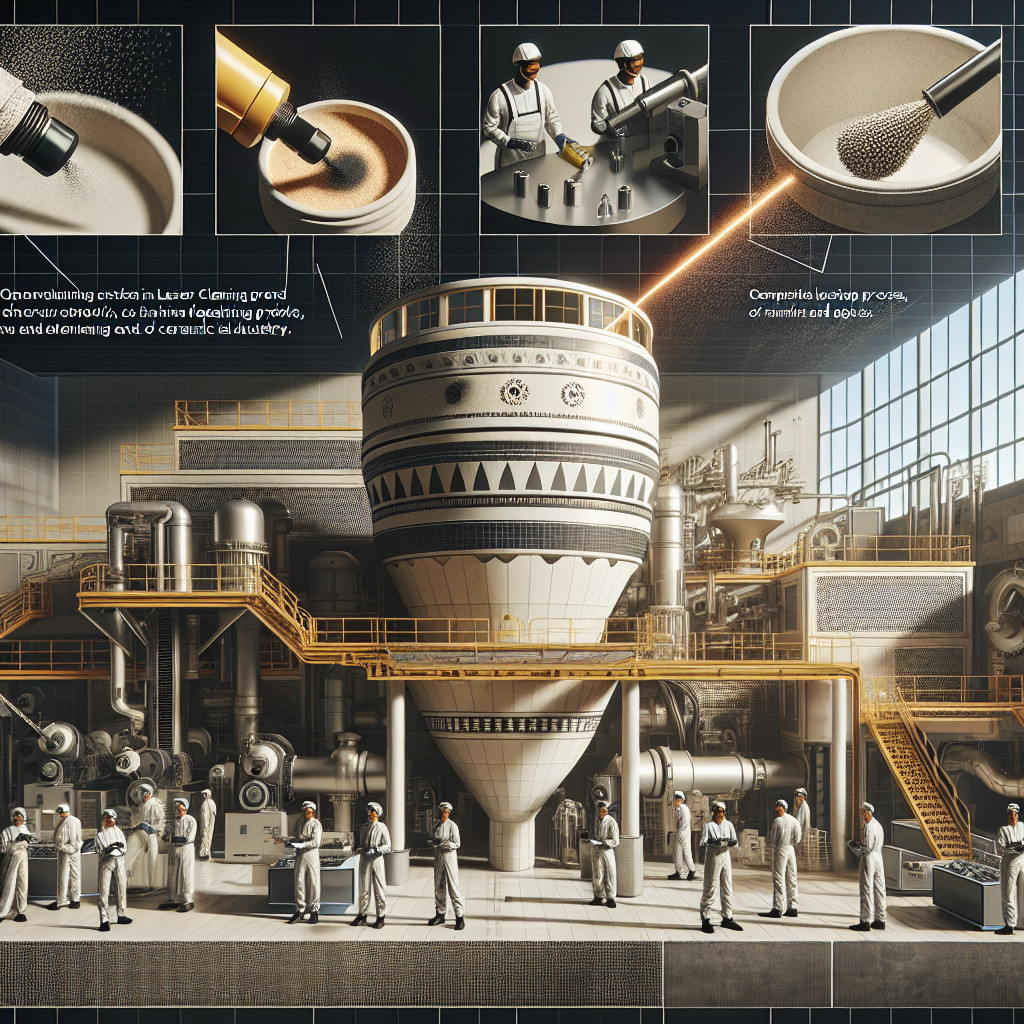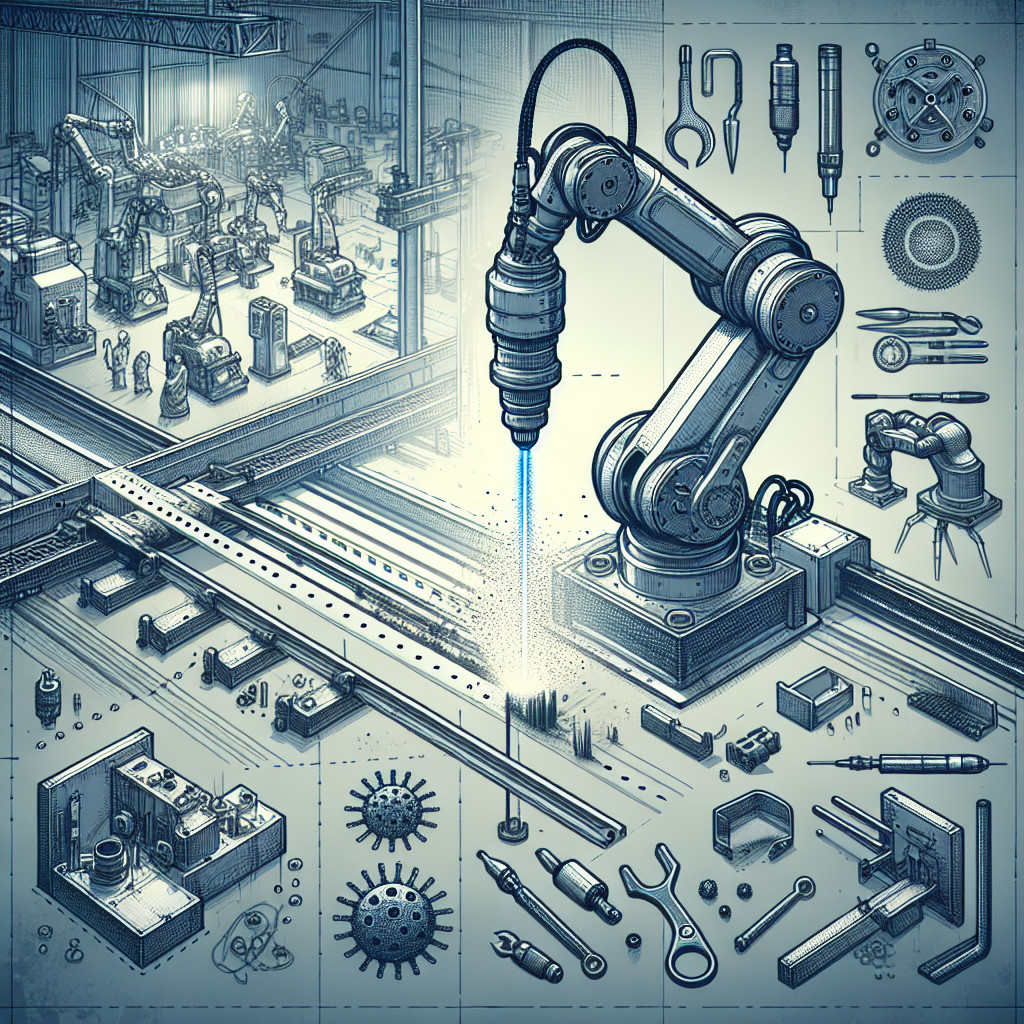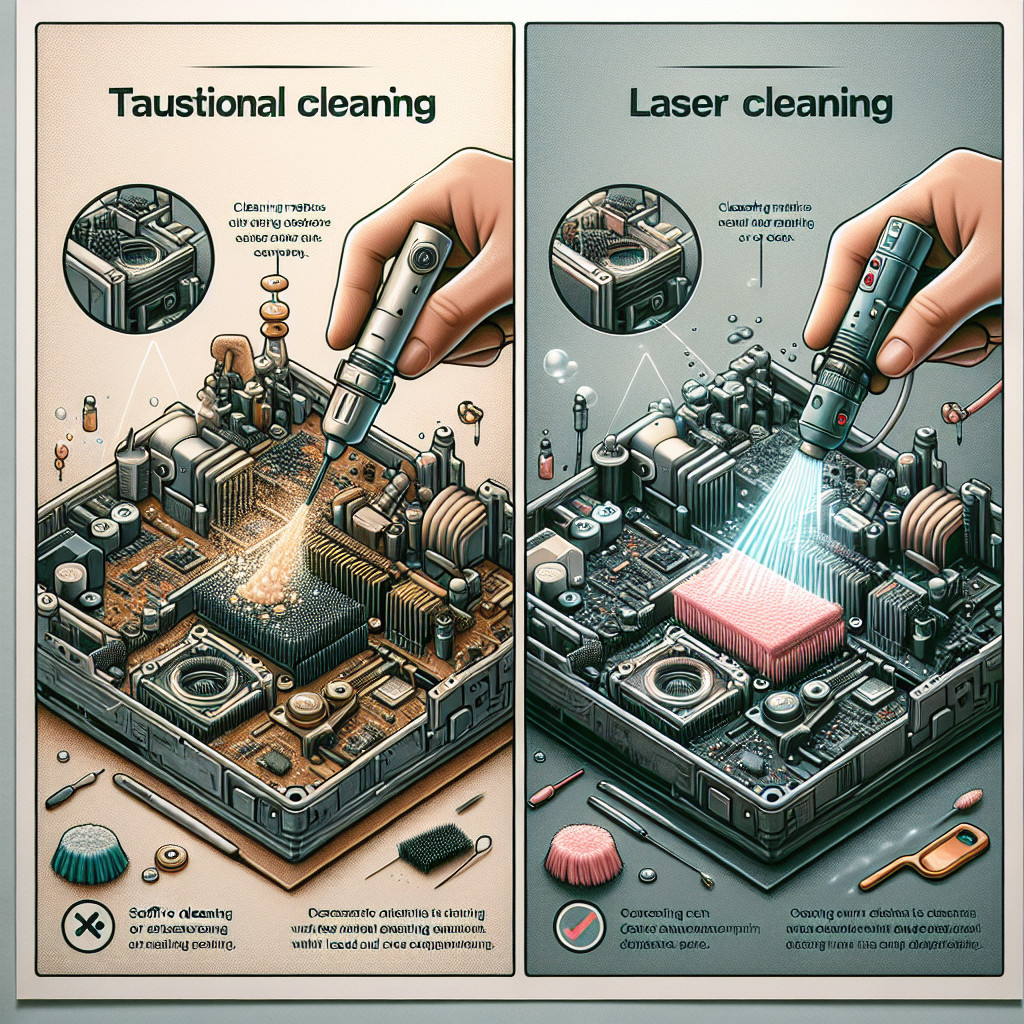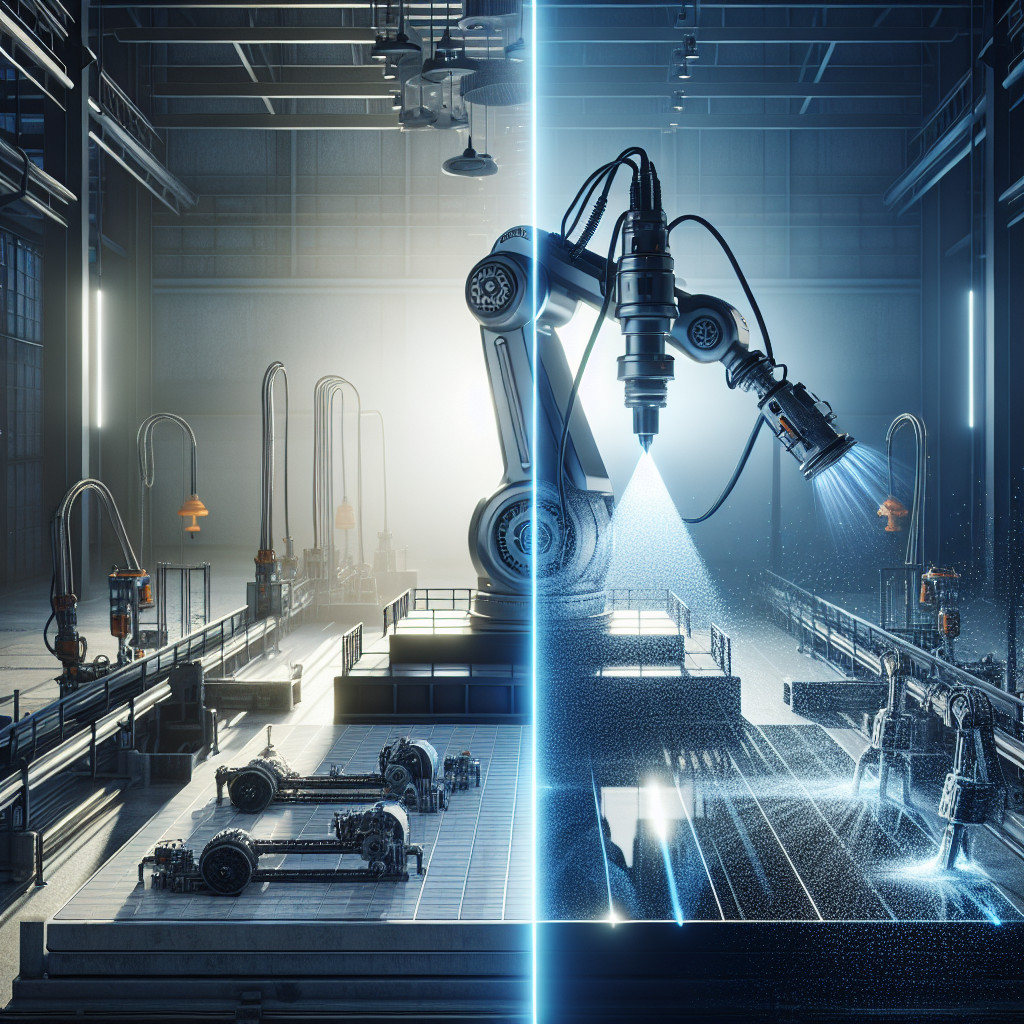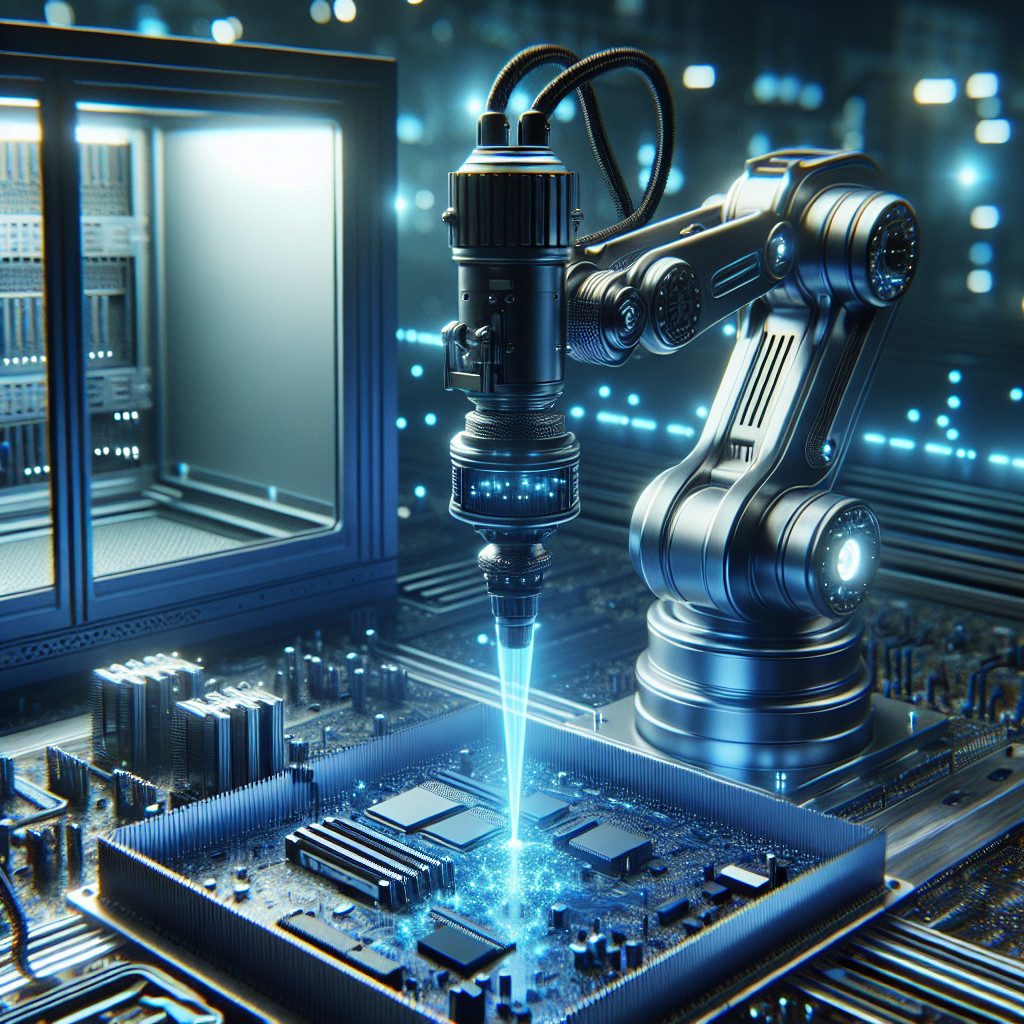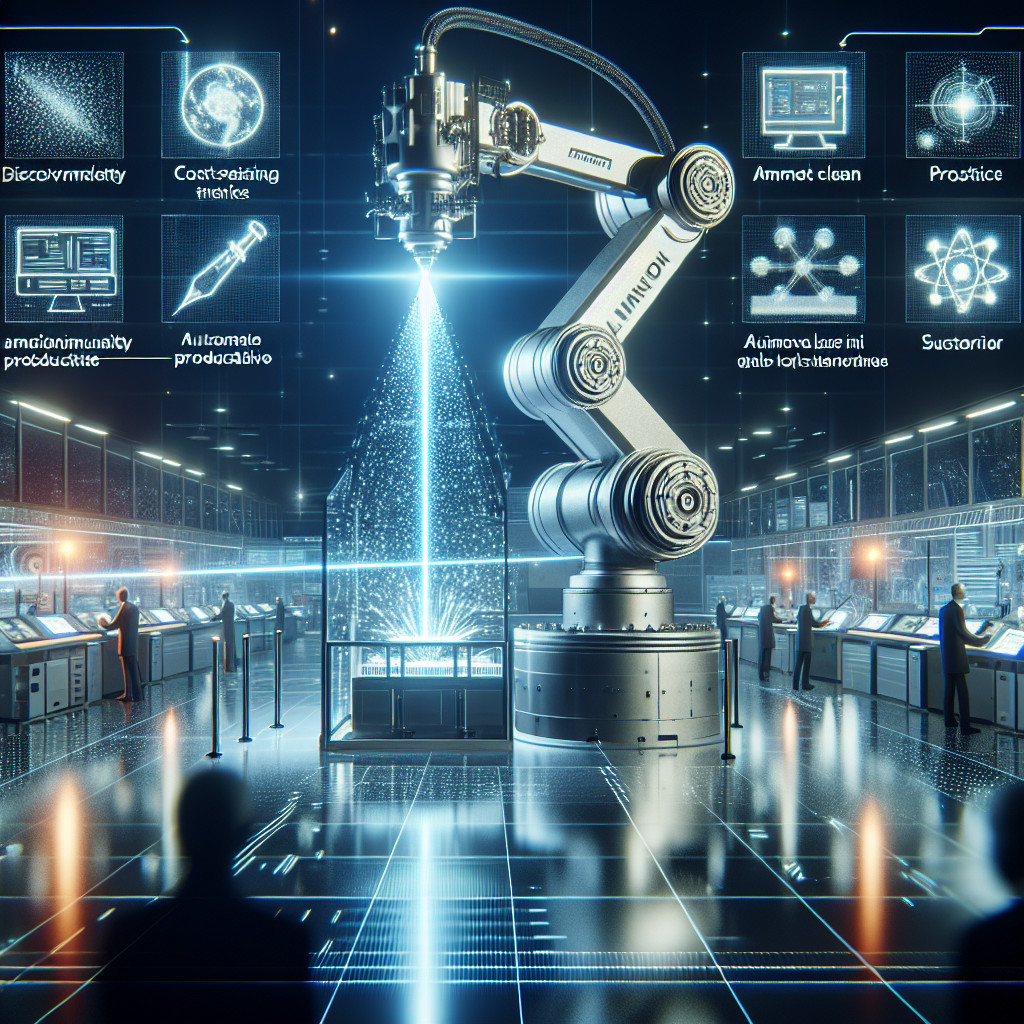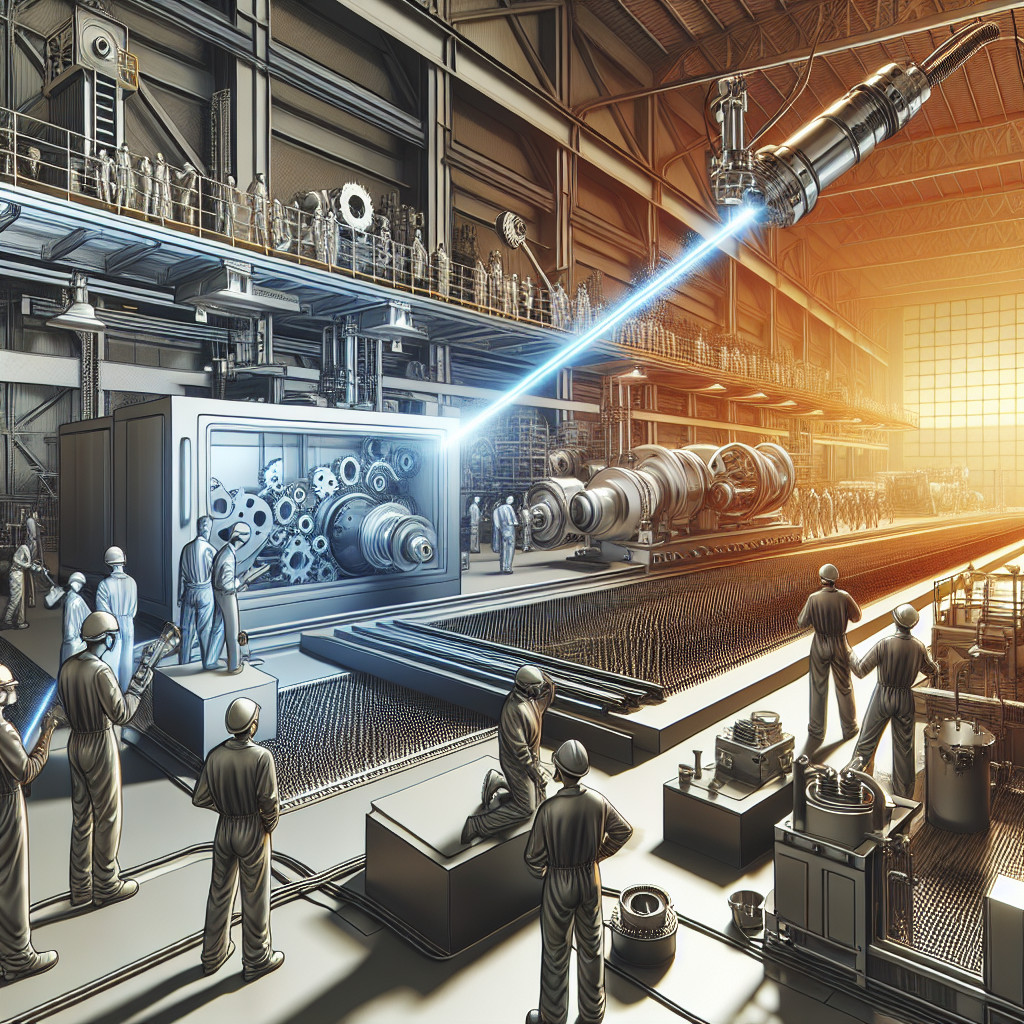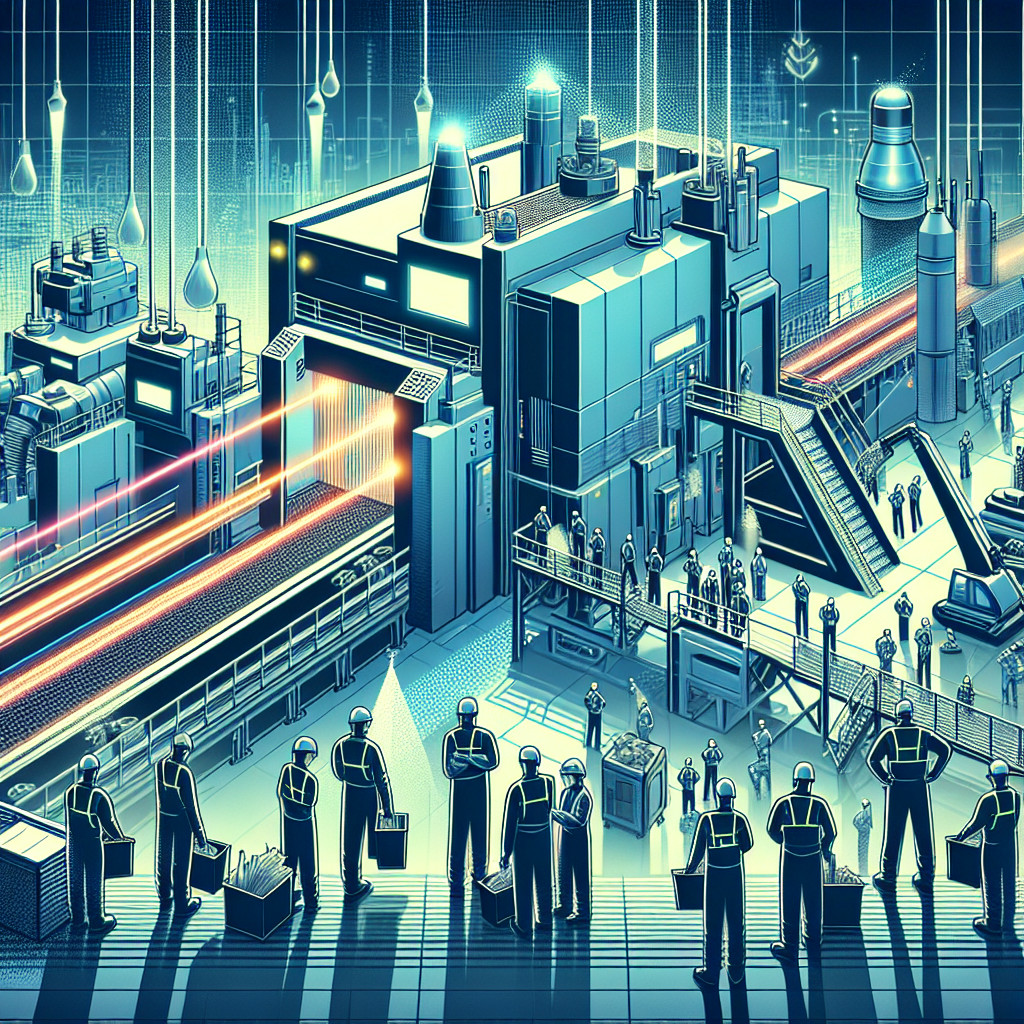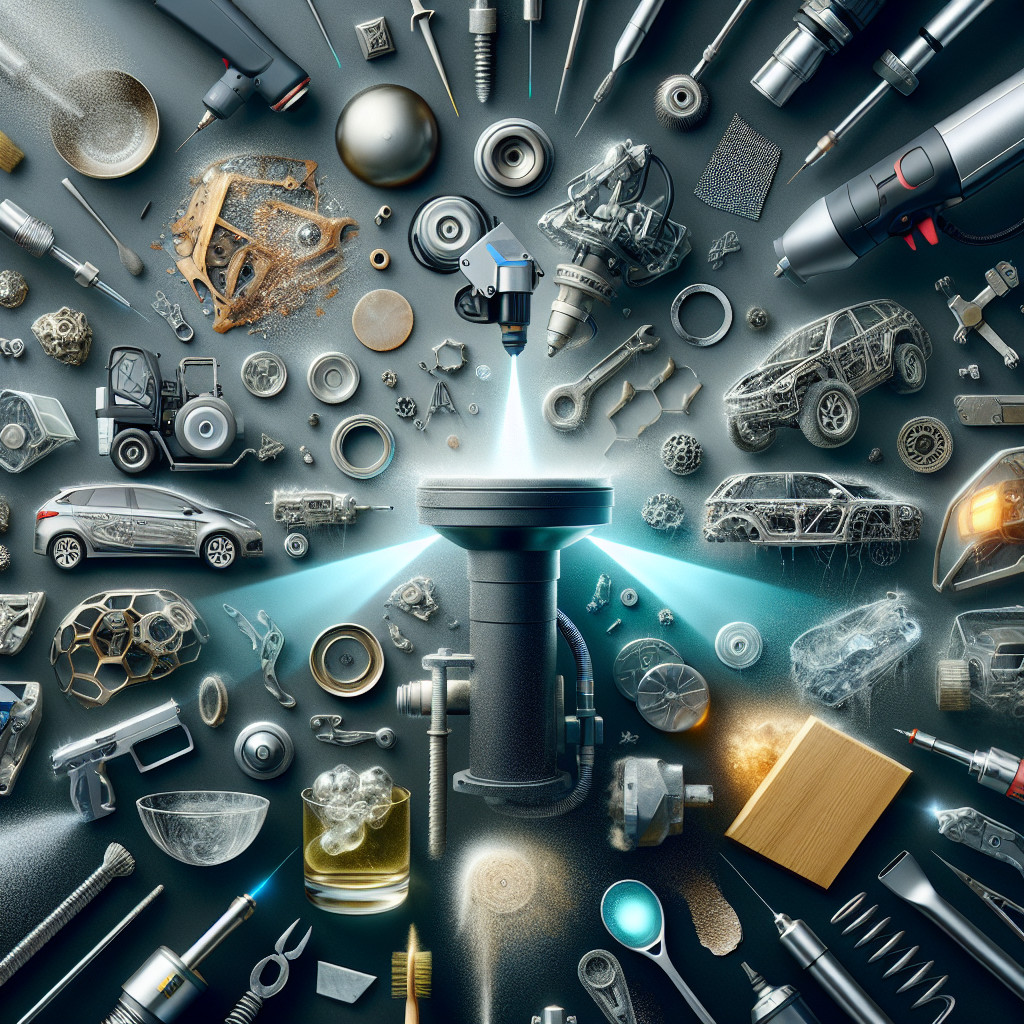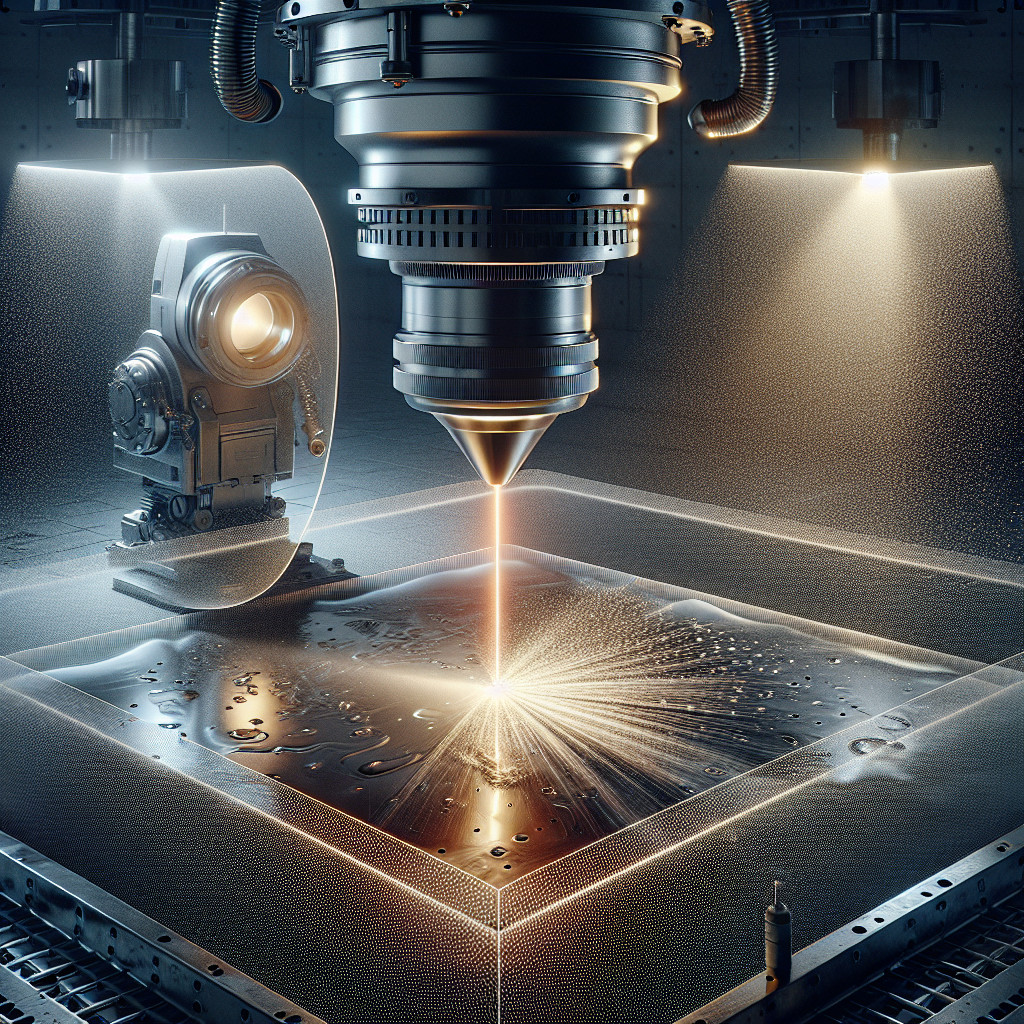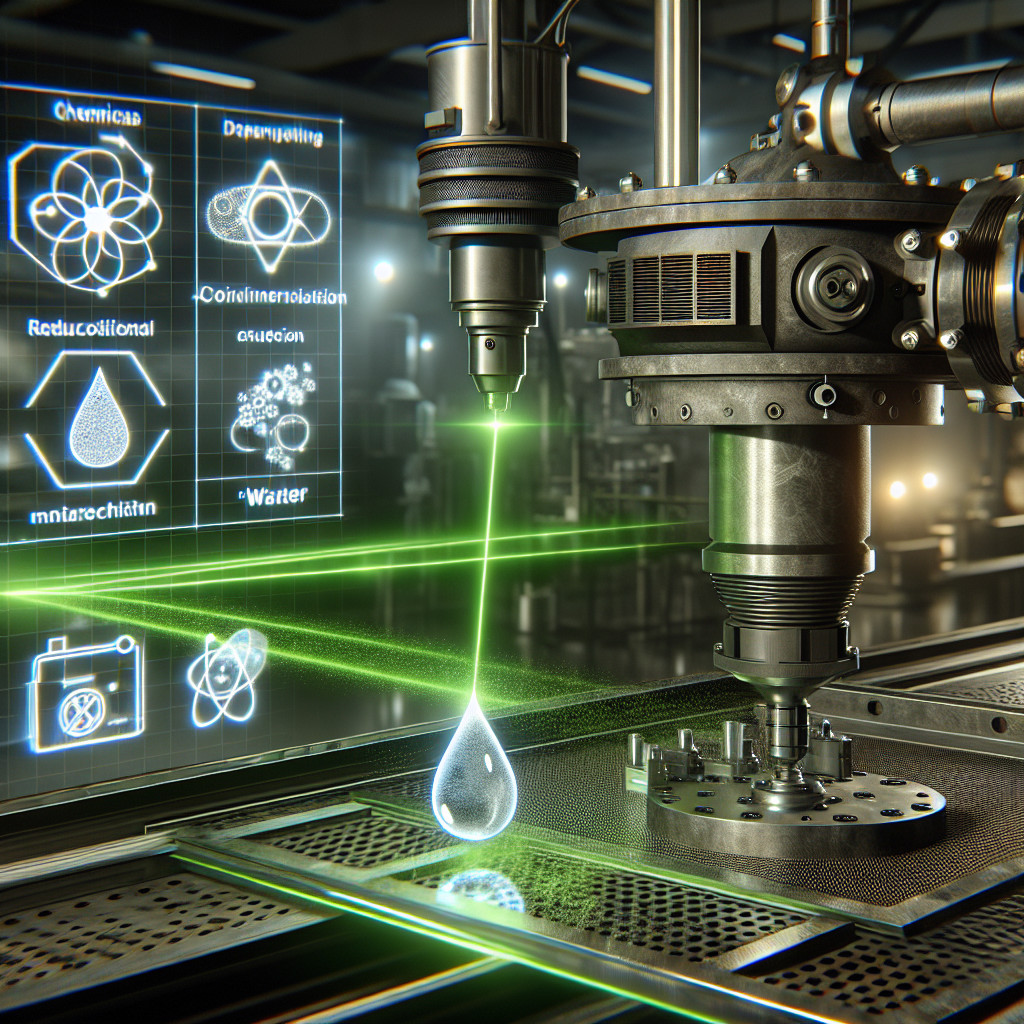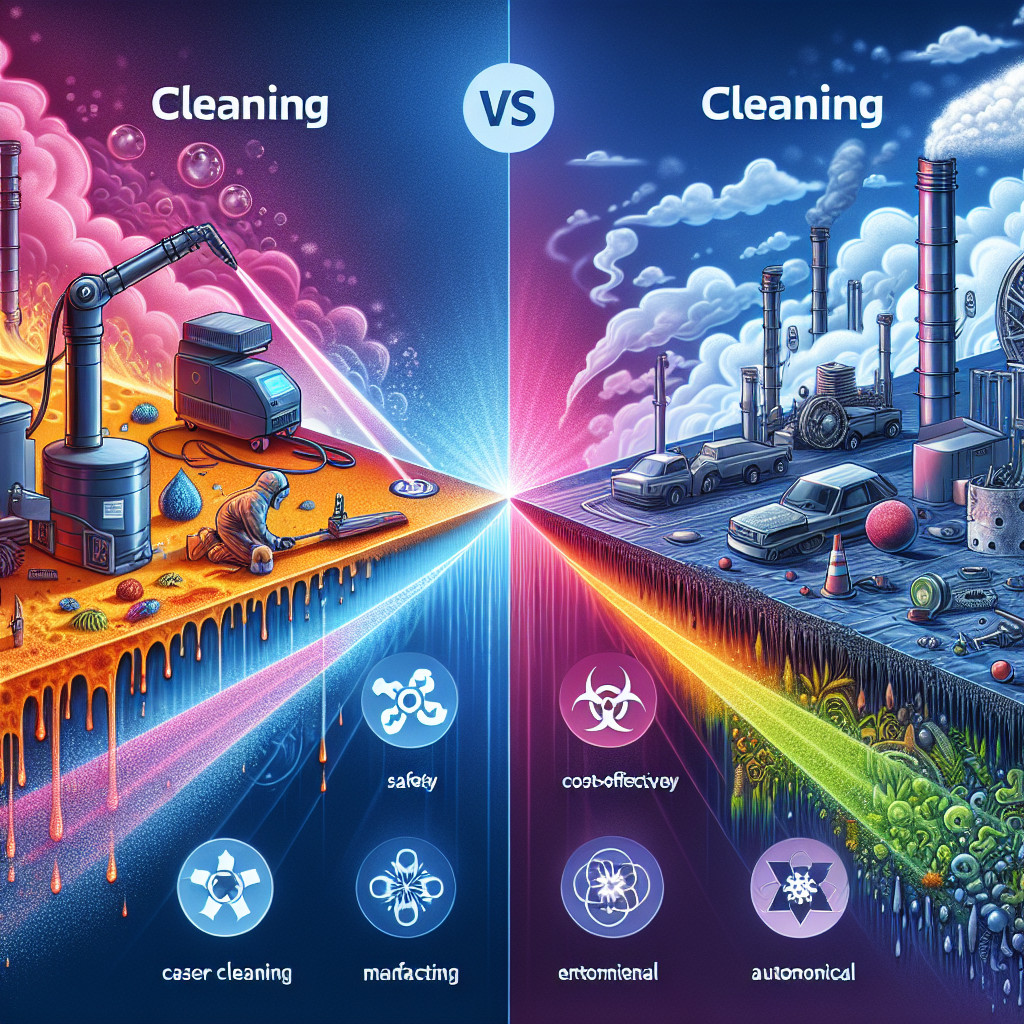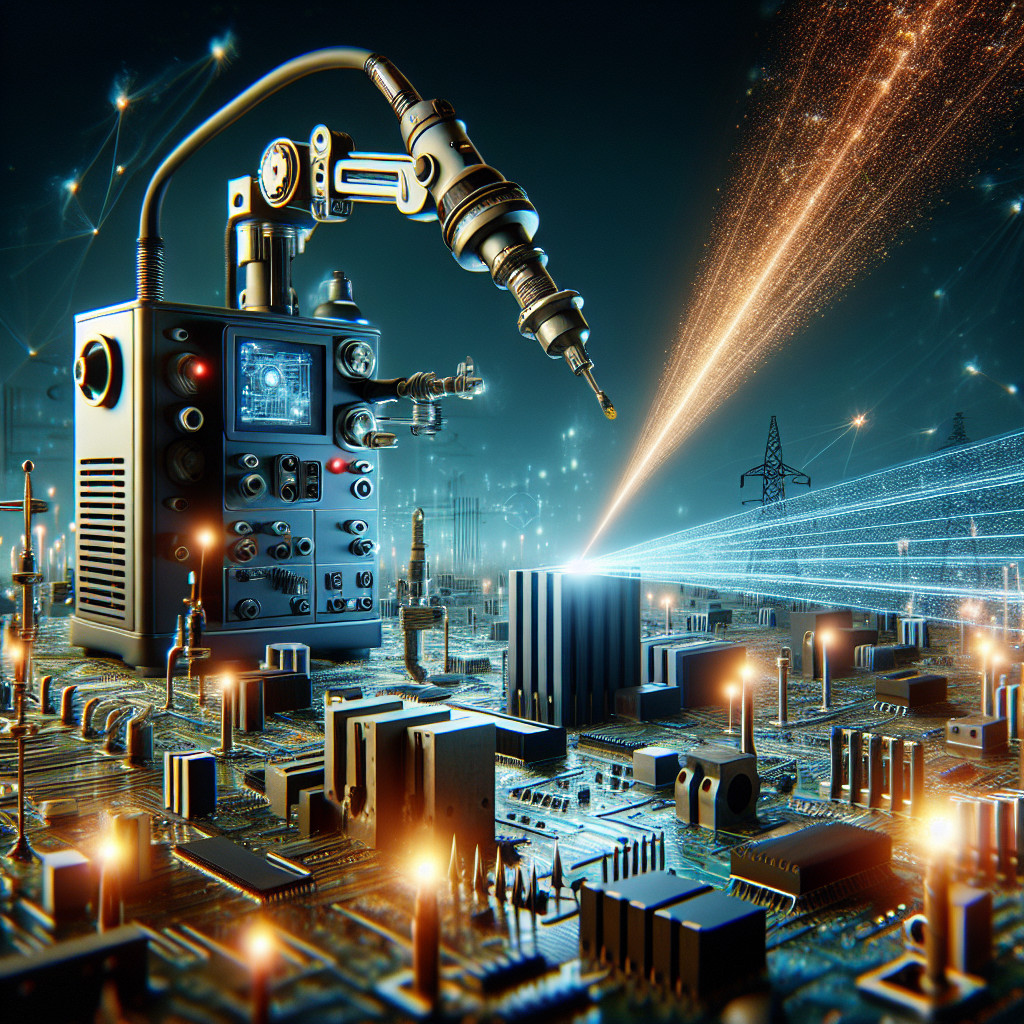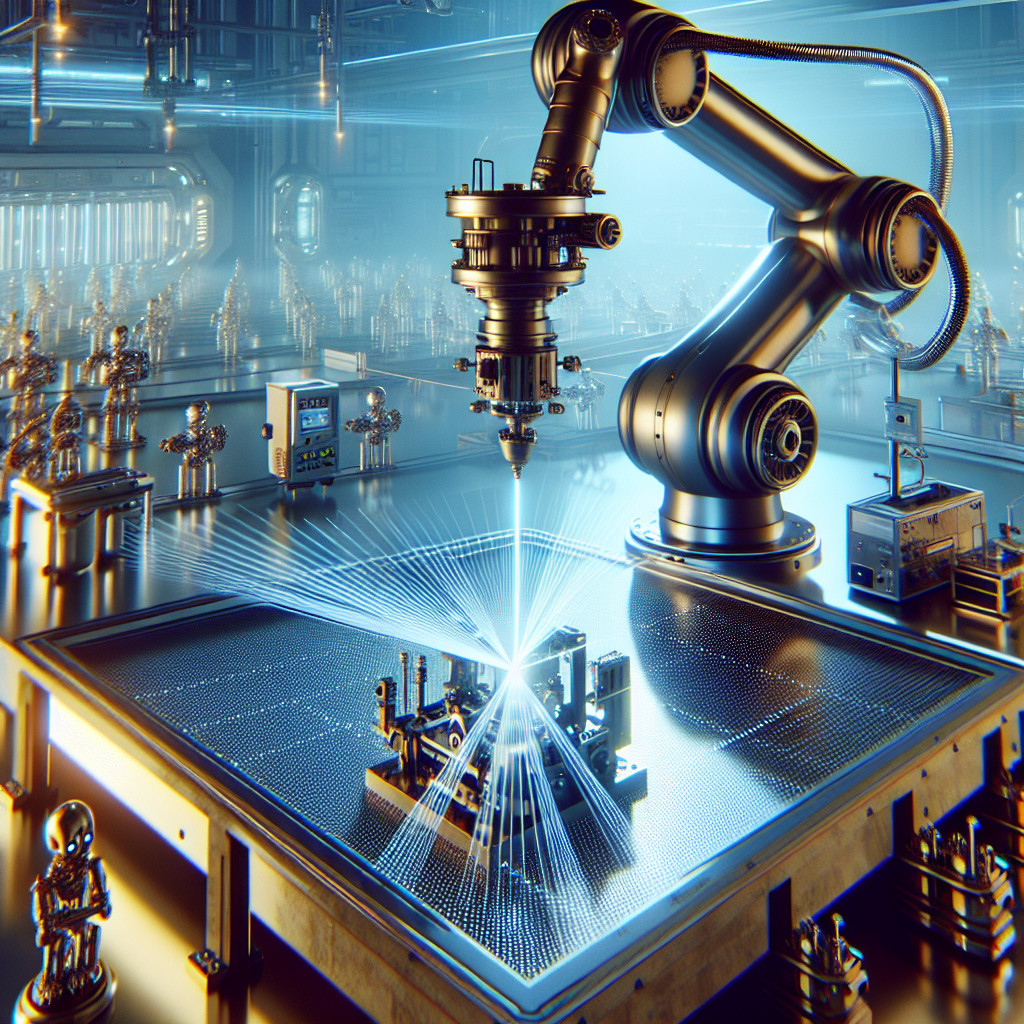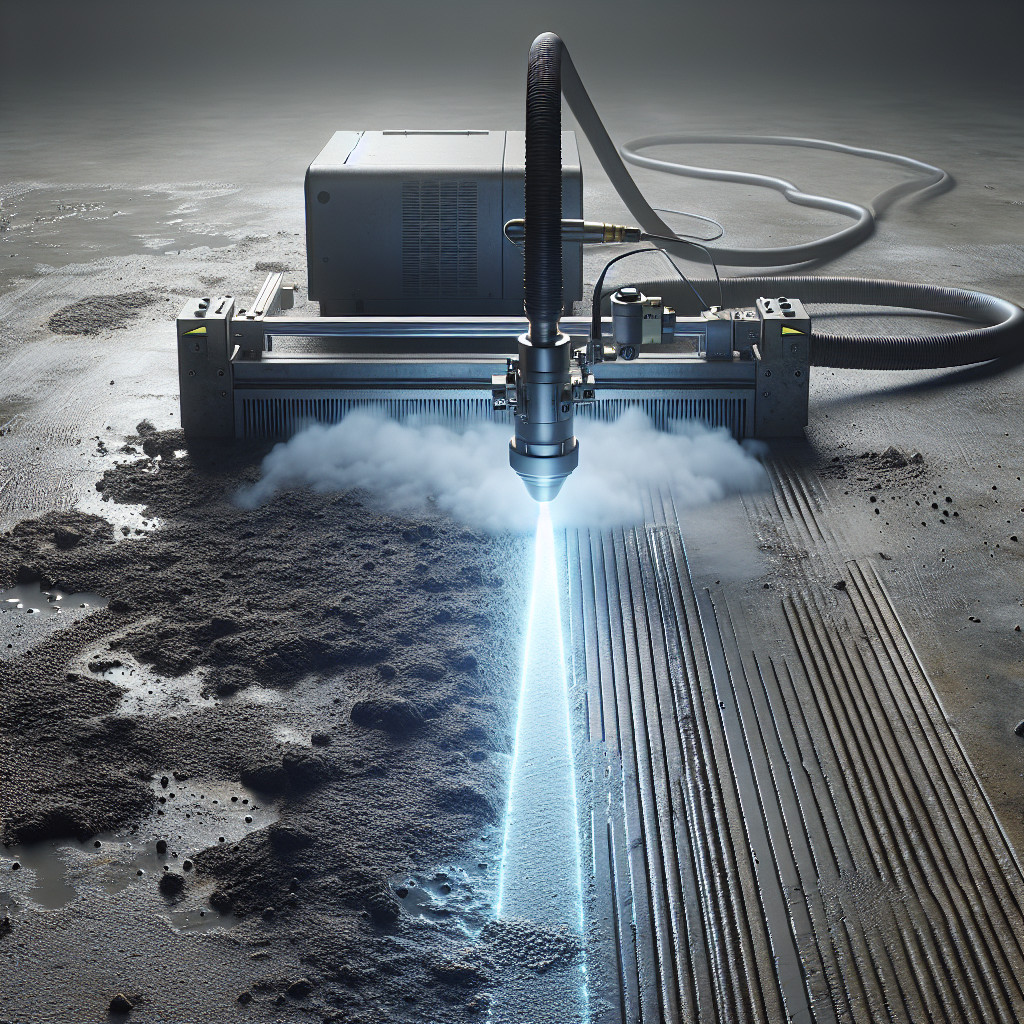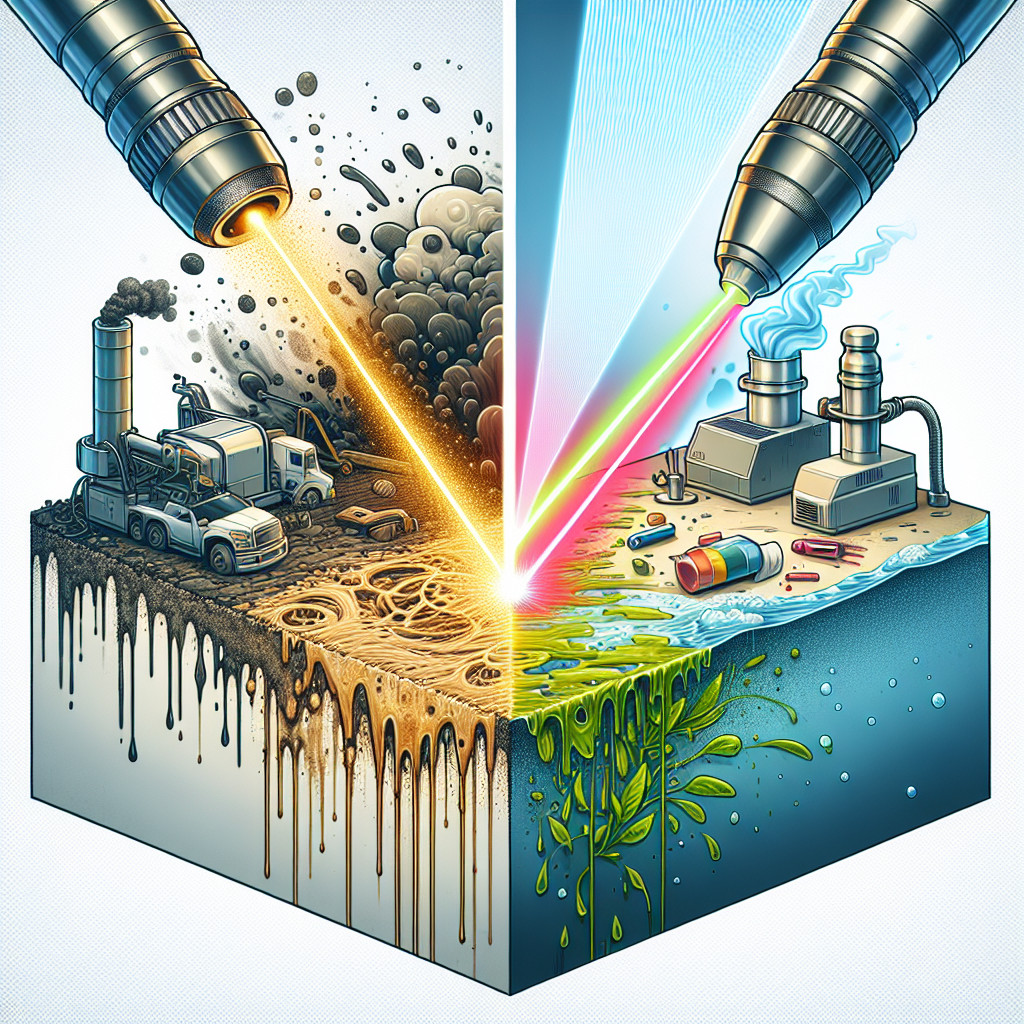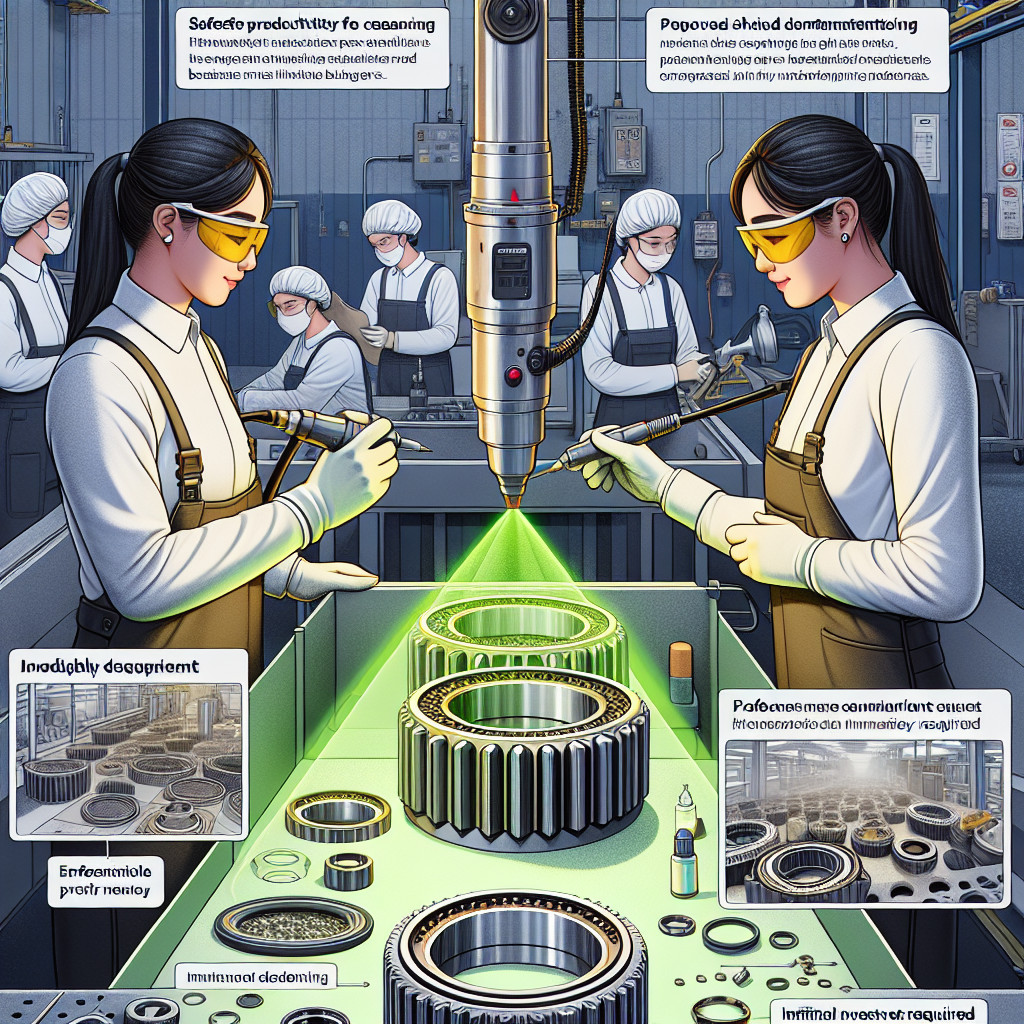- The impact of laser cleaning technology on environmental sustainability
- Laser cleaning technology for cleaning delicate surfaces
- Laser cleaning technology for removing contaminants from electronic components
- Laser cleaning technology for cleaning textiles and fabrics
- Laser cleaning technology for cleaning metal surfaces
- Laser cleaning technology for cleaning 3D printed objects
- Laser cleaning technology for cleaning molds and tooling
- Laser cleaning technology for cleaning historical buildings and monuments
The impact of laser cleaning technology on environmental sustainability
In recent years, there has been a growing concern about the environmental impact of various industrial processes. One such process that has gained attention is cleaning, which often involves the use of harmful chemicals and generates significant amounts of waste. However, with the advent of laser cleaning technology, there is hope for a more sustainable and eco-friendly approach to cleaning. This article aims to explore .
Laser cleaning technology:
Laser cleaning technology is a non-contact cleaning method that utilizes laser beams to remove contaminants from surfaces. It works by directing a high-intensity laser beam onto the surface, which causes the contaminants to vaporize or sublimate, leaving behind a clean surface. Unlike traditional cleaning methods, laser cleaning does not require the use of chemicals or abrasive materials, making it a more environmentally friendly option.
Reduced chemical usage:
One of the significant advantages of laser cleaning technology is its ability to eliminate the need for harmful chemicals. Traditional cleaning methods often rely on the use of solvents, detergents, and other chemical agents, which can have detrimental effects on the environment. These chemicals can contaminate water sources, harm aquatic life, and contribute to air pollution. By eliminating the use of chemicals, laser cleaning technology helps reduce the environmental impact associated with cleaning processes.
Waste reduction:
Another environmental benefit of laser cleaning technology is the significant reduction in waste generation. Traditional cleaning methods often produce a substantial amount of waste, including used cleaning agents, contaminated water, and disposable cleaning materials. These waste materials can be challenging to dispose of properly and often end up in landfills or water bodies, causing pollution. Laser cleaning technology eliminates the need for disposable materials and reduces the amount of waste generated during the cleaning process, contributing to a more sustainable approach.
Energy efficiency:
Laser cleaning technology is also known for its energy efficiency. Compared to traditional cleaning methods, laser cleaning requires less energy to achieve the same or even better cleaning results. This energy efficiency translates into reduced carbon emissions and a smaller carbon footprint. By minimizing energy consumption, laser cleaning technology helps mitigate climate change and promotes environmental sustainability.
Versatility and precision:
Laser cleaning technology offers versatility and precision, making it suitable for a wide range of applications. It can be used to clean various surfaces, including metals, plastics, ceramics, and even delicate historical artifacts. The precise control of laser beams allows for selective cleaning, targeting only the contaminants without damaging the underlying material. This precision minimizes the need for rework or repairs, further reducing waste and environmental impact.
Keywords: laser cleaning technology, environmental sustainability, chemical usage, waste reduction, energy efficiency, versatility, precision.
Long-tail phrases:
1. .
2. Laser cleaning technology: a sustainable approach to cleaning.
3. Reducing environmental impact through laser cleaning technology.
4. The benefits of laser cleaning technology for the environment.
5. Laser cleaning: an eco-friendly alternative to traditional cleaning methods.
Laser cleaning technology for cleaning delicate surfaces
One of the key advantages of laser cleaning technology is its versatility. It can be used on a wide range of delicate surfaces, including historical artifacts, artwork, delicate machinery, and even sensitive electronic components. The laser beam can be adjusted to different power levels and frequencies, allowing for precise and controlled cleaning. This ensures that even the most fragile surfaces can be cleaned effectively without any risk of damage.
Another advantage of laser cleaning technology is its efficiency. The laser beam can remove contaminants in a matter of seconds, significantly reducing the cleaning time compared to traditional methods. Additionally, laser cleaning is a non-contact process, which means that there is no physical wear and tear on the surface being cleaned. This extends the lifespan of delicate surfaces and reduces the need for frequent maintenance or replacement.
Furthermore, laser cleaning technology is an environmentally friendly option. As it does not require the use of any chemicals or abrasive materials, there is no risk of harmful substances being released into the environment. This makes laser cleaning a sustainable and eco-friendly choice for cleaning delicate surfaces.
In addition to its cleaning capabilities, laser technology also offers other benefits. For example, it can be used for surface preparation, such as removing coatings or rust from metal surfaces before painting or welding. Laser cleaning can also be used for restoration purposes, allowing conservators to remove layers of dirt and grime from historical artifacts without causing any damage.
In conclusion, laser cleaning technology is a revolutionary method for cleaning delicate surfaces. Its non-contact and chemical-free approach make it a safe and effective choice for a wide range of applications. With its versatility, efficiency, and environmental friendliness, laser cleaning technology is set to become the go-to method for cleaning delicate surfaces in various industries.
Keywords: laser cleaning technology, delicate surfaces, non-contact cleaning, environmentally friendly, efficient cleaning, surface preparation, restoration, versatile cleaning method.
Long-tail phrases:
1. Laser cleaning technology for delicate surfaces
2. Non-contact cleaning method for delicate surfaces
3. Environmentally friendly cleaning for delicate surfaces
4. Efficient cleaning technique for delicate surfaces
5. Versatile laser cleaning technology for delicate surfaces.
Laser cleaning technology for removing contaminants from electronic components
One of the key advantages of laser cleaning technology is its ability to remove a wide range of contaminants. Whether it is dust, dirt, oils, or even solder residues, laser cleaning can effectively eliminate these substances from the surface of electronic components. This ensures that the components are free from any foreign particles that could potentially interfere with their functionality.
Furthermore, laser cleaning technology offers a non-contact cleaning method, which means that there is no physical contact between the cleaning tool and the electronic component. This eliminates the risk of damage that can occur with traditional cleaning methods, such as brushing or wiping. Additionally, laser cleaning can reach areas that are difficult to access with conventional cleaning techniques, ensuring a thorough and comprehensive cleaning process.
Another advantage of laser cleaning technology is its speed and efficiency. The laser beam can be precisely controlled, allowing for rapid and targeted cleaning. This is particularly beneficial in high-volume manufacturing environments, where time is of the essence. Laser cleaning can significantly reduce the cleaning time, leading to increased productivity and cost savings.
Moreover, laser cleaning technology is environmentally friendly. Unlike traditional cleaning methods that often involve the use of chemicals, laser cleaning does not require any additional substances. This eliminates the need for hazardous chemicals and reduces the generation of waste. As a result, laser cleaning contributes to a cleaner and greener manufacturing process.
In addition to its cleaning capabilities, laser technology can also be used for other purposes in the electronics industry. For instance, laser marking and engraving can be performed on electronic components to add identification codes, logos, or other markings. This provides a permanent and tamper-proof method of labeling, ensuring traceability and authenticity.
In conclusion, laser cleaning technology has emerged as a valuable tool for removing contaminants from electronic components. Its precision, efficiency, and non-contact nature make it an ideal solution for manufacturers seeking to improve the quality and reliability of their products. With its ability to remove a wide range of contaminants and its environmentally friendly characteristics, laser cleaning technology is set to play a significant role in the electronics industry.
Keywords: laser cleaning technology, electronic components, contaminants, surface, precision, non-contact, speed, efficiency, environmentally friendly, laser marking, engraving.
Long-tail phrases:
– in high-volume manufacturing environments.
– The advantages of laser cleaning technology for delicate electronic components.
– The environmental benefits of laser cleaning technology in the electronics industry.
– Laser marking and engraving for identification and traceability of electronic components.
Laser cleaning technology for cleaning textiles and fabrics
The process of laser cleaning textiles and fabrics involves the use of a laser beam that is directed onto the surface of the fabric. The laser energy is absorbed by the dirt particles and contaminants, causing them to vaporize and disintegrate. This vaporization process is known as ablation, and it leaves behind a clean and residue-free fabric surface.
One of the key advantages of laser cleaning technology is its versatility. It can be used on a wide range of fabrics, including natural fibers like cotton, wool, and silk, as well as synthetic materials such as polyester and nylon. This makes it suitable for cleaning various types of clothing, household textiles, and even industrial fabrics used in automotive and aerospace applications.
Another benefit of laser cleaning technology is its precision. The laser beam can be controlled and adjusted to target specific areas or stains on the fabric, ensuring thorough cleaning without affecting the surrounding areas. This level of precision is particularly useful when dealing with delicate fabrics or intricate patterns where traditional cleaning methods may cause damage or discoloration.
Furthermore, laser cleaning technology is an environmentally friendly option. Unlike traditional cleaning methods that often require the use of water and chemicals, laser cleaning is a dry process that does not produce any waste or harmful byproducts. It also eliminates the need for excessive water consumption and reduces the use of detergents and other cleaning agents, making it a sustainable and eco-conscious choice.
In addition to its cleaning capabilities, laser technology can also be used for fabric restoration and preservation. It can remove yellowing and discoloration caused by aging or exposure to sunlight, rejuvenating the fabric and restoring its original appearance. This makes it a valuable tool for museums, historical preservation organizations, and collectors who aim to preserve and maintain valuable textiles and fabrics.
In conclusion, laser cleaning technology offers a highly efficient, precise, and environmentally friendly solution for cleaning textiles and fabrics. Its non-contact and non-abrasive nature make it suitable for a wide range of fabrics, including delicate and intricate materials. With its ability to remove dirt, stains, and even restore fabric, laser cleaning technology is a game-changer in the textile cleaning industry.
Keywords: laser cleaning technology, textiles, fabrics, cleaning, non-contact, non-abrasive, dirt, stains, contaminants, ablation, precision, versatility, environmentally friendly, restoration, preservation.
Long-tail phrases: laser cleaning technology for delicate fabrics, laser cleaning for textile preservation, laser cleaning for fabric restoration, eco-friendly textile cleaning, non-abrasive fabric cleaning.
Laser cleaning technology for cleaning metal surfaces
The process of laser cleaning involves the use of a high-intensity laser beam that is directed towards the metal surface. The laser beam interacts with the contaminants on the surface, causing them to vaporize or disintegrate. The energy from the laser beam is absorbed by the contaminants, while the metal surface remains unaffected. This selective absorption of energy ensures that the metal surface is cleaned thoroughly without any damage.
One of the key advantages of laser cleaning technology is its versatility. It can be used on a wide range of metal surfaces, including steel, aluminum, copper, brass, and more. Whether it is removing rust from a metal sculpture, cleaning oil stains from a car engine, or preparing a metal surface for welding, laser cleaning technology can deliver exceptional results.
Furthermore, laser cleaning technology offers several benefits over traditional cleaning methods. Firstly, it is a non-abrasive process, which means that it does not cause any physical damage to the metal surface. This is particularly important when dealing with delicate or intricate metal objects. Secondly, laser cleaning is a dry process, eliminating the need for water or chemicals. This makes it an environmentally friendly option, reducing waste and minimizing the use of hazardous substances.
Another advantage of laser cleaning technology is its precision. The laser beam can be precisely controlled, allowing for targeted cleaning of specific areas or intricate patterns. This level of precision is particularly beneficial in industries such as aerospace, automotive, and electronics, where cleanliness and precision are of utmost importance.
In addition to its cleaning capabilities, laser technology can also be used for surface preparation. By adjusting the laser parameters, the surface can be modified to enhance adhesion for subsequent processes such as painting, coating, or bonding. This makes laser cleaning technology a versatile tool in various manufacturing and maintenance applications.
In conclusion, laser cleaning technology has emerged as a game-changer in the field of metal surface cleaning. Its non-contact, non-abrasive, and environmentally friendly nature make it a preferred choice for industries and individuals looking for efficient and effective cleaning solutions. With its versatility, precision, and ability to prepare surfaces for further processes, laser cleaning technology is set to continue revolutionizing the way we clean metal surfaces.
Keywords: laser cleaning technology, metal surfaces, contaminants, rust, paint, grease, oil, non-contact, environmentally friendly, non-abrasive, precision, surface preparation.
Long-tail phrases:
1. Laser cleaning technology for metal surfaces.
2. Benefits of laser cleaning technology.
3. Non-abrasive cleaning method for metal surfaces.
4. Precision cleaning with laser technology.
5. Environmentally friendly metal surface cleaning.
6. Laser cleaning for rust removal.
7. Laser cleaning for paint removal.
8. Laser cleaning for grease and oil removal.
9. Versatile cleaning method for metal surfaces.
10. Laser cleaning for surface preparation.
Laser cleaning technology for cleaning 3D printed objects
One of the key advantages of laser cleaning technology is its precision. The laser beam can be controlled with great accuracy, allowing for selective cleaning of specific areas without affecting the surrounding structures. This is particularly beneficial for intricate and complex 3D printed objects, where traditional cleaning methods may not be able to reach or clean effectively. Laser cleaning technology ensures that every nook and cranny of the printed object is thoroughly cleaned, resulting in a high-quality finish.
Another advantage of laser cleaning technology is its versatility. It can be used on a wide range of materials commonly used in 3D printing, including plastics, metals, ceramics, and composites. This makes it suitable for various applications across different industries, from automotive and aerospace to healthcare and consumer goods. Laser cleaning technology can effectively remove contaminants from different types of surfaces, regardless of their shape, size, or texture.
Furthermore, laser cleaning technology is an environmentally friendly solution. Unlike traditional cleaning methods that often involve the use of chemicals or generate waste, laser cleaning is a clean and sustainable process. It does not produce any harmful byproducts or residues, making it a safe and eco-friendly option for cleaning 3D printed objects. Additionally, laser cleaning technology is a dry process, eliminating the need for water or other cleaning agents, further reducing its environmental impact.
In terms of efficiency, laser cleaning technology offers significant time and cost savings. Traditional cleaning methods can be time-consuming, requiring manual labor and multiple steps. Laser cleaning, on the other hand, is a fast and automated process. It can clean large areas in a short amount of time, reducing the overall cleaning time and increasing productivity. Additionally, laser cleaning technology eliminates the need for consumables such as sandpaper or chemicals, reducing the operational costs associated with cleaning 3D printed objects.
In conclusion, laser cleaning technology is a game-changer in the field of 3D printing. It provides a precise, versatile, environmentally friendly, and efficient solution for cleaning 3D printed objects. With its ability to remove contaminants without damaging the delicate structures of the printed objects, laser cleaning technology ensures a high-quality finish. Whether it’s removing excess material, support structures, or residue, laser cleaning technology is a reliable and effective method for post-processing and cleaning 3D printed objects.
Keywords: laser cleaning technology, 3D printing, cleaning, post-processing, non-contact, non-abrasive, contaminants, precision, versatility, materials, environmentally friendly, efficiency.
Long-tail phrases: laser cleaning technology for 3D printed objects, non-abrasive cleaning method, precision cleaning for intricate 3D printed objects, versatile cleaning solution for different materials, environmentally friendly cleaning process, time and cost-saving cleaning method for 3D printed objects.
Laser cleaning technology for cleaning molds and tooling
However, with the advent of laser cleaning technology, these challenges have been overcome. Laser cleaning offers a non-contact and non-abrasive cleaning solution that is safe for both the environment and the molds and tooling. The laser beam is directed at the surface to be cleaned, and its energy is absorbed by the contaminants, causing them to vaporize and disintegrate. This process, known as laser ablation, effectively removes even the most stubborn residues, such as rust, paint, grease, and mold release agents.
One of the key advantages of laser cleaning technology is its ability to clean molds and tooling without causing any damage. Unlike traditional cleaning methods, laser cleaning does not involve any physical contact with the surface, eliminating the risk of scratches, dents, or wear. This is particularly important for delicate molds and tooling, which require utmost care to maintain their precision and functionality. Laser cleaning ensures that the molds and tooling remain intact and ready for use, prolonging their lifespan and reducing the need for frequent replacements.
Furthermore, laser cleaning technology offers unparalleled precision and control. The laser beam can be precisely focused and adjusted to target specific areas or contaminants, allowing for selective cleaning. This level of precision is crucial in industries where even the slightest residue can affect product quality and performance. Laser cleaning ensures that molds and tooling are thoroughly cleaned, leaving no trace of contaminants behind.
In addition to its effectiveness and precision, laser cleaning technology also offers significant time and cost savings. The process is highly efficient, requiring minimal setup and downtime. Unlike traditional cleaning methods that may involve disassembling the molds and tooling for cleaning, laser cleaning can be performed in situ, eliminating the need for time-consuming dismantling and reassembly. Moreover, laser cleaning eliminates the need for expensive and hazardous cleaning chemicals, reducing operational costs and environmental impact.
As laser cleaning technology continues to evolve, new advancements are being made to further enhance its capabilities. For instance, the development of handheld laser cleaning devices has made it possible to clean molds and tooling in hard-to-reach areas or confined spaces. These portable devices offer flexibility and convenience, allowing operators to clean molds and tooling without the need for complex setups or extensive equipment.
In conclusion, laser cleaning technology has revolutionized the cleaning of molds and tooling in the manufacturing industry. Its non-contact, non-abrasive, and precise cleaning capabilities make it an ideal solution for removing contaminants and residues from various surfaces. With its ability to ensure damage-free cleaning, laser cleaning technology prolongs the lifespan of molds and tooling, reduces operational costs, and improves product quality. As the manufacturing industry continues to embrace this innovative cleaning method, laser cleaning technology is set to become an indispensable tool for maintaining cleanliness and efficiency in the production process.
Keywords: laser cleaning technology, molds, tooling, contaminants, residues, manufacturing industry, efficient, effective, vaporize, dislodge, pristine condition, traditional cleaning methods, harsh chemicals, abrasive materials, manual scrubbing, environment, intricate areas, incomplete cleaning, compromised product quality, non-contact, non-abrasive, laser beam, laser ablation, rust, paint, grease, mold release agents, damage-free cleaning, precision, selective cleaning, time and cost savings, handheld laser cleaning devices, hard-to-reach areas, confined spaces, portable devices, flexibility, convenience, complex setups, extensive equipment, damage-free cleaning, prolonged lifespan, operational costs, improved product quality, cleanliness, efficiency.
Long-tail phrases: laser cleaning technology for molds and tooling, advanced cleaning technique, environmentally friendly cleaning method, laser ablation for mold cleaning, precision cleaning for tooling, non-abrasive mold cleaning, efficient residue removal, laser cleaning benefits, cost-effective cleaning solution, laser cleaning applications in manufacturing, laser cleaning for industrial molds, tooling maintenance with laser technology, laser cleaning advancements, portable laser cleaning devices, laser cleaning for hard-to-reach areas, laser cleaning for confined spaces, laser cleaning for delicate molds, laser cleaning for intricate tooling, laser cleaning for improved product quality, laser cleaning for reduced operational costs, laser cleaning for prolonged mold lifespan.
Laser cleaning technology for cleaning historical buildings and monuments
Laser cleaning technology offers a safe and gentle alternative. It works by using short pulses of laser light to vaporize the contaminants on the surface without affecting the underlying material. The laser beam is highly focused and can be adjusted to target specific areas, making it ideal for intricate and detailed surfaces. Moreover, the intensity and wavelength of the laser can be customized to suit different types of materials, ensuring optimal cleaning results.
One of the key advantages of laser cleaning technology is its ability to remove even the toughest stains and pollutants without leaving any residue behind. Unlike traditional cleaning methods, which often require the use of chemicals or solvents, laser cleaning is a dry process that does not introduce any additional substances to the surface. This not only eliminates the risk of chemical reactions or discoloration but also minimizes the environmental impact of the cleaning process.
Furthermore, laser cleaning technology is highly versatile and can be used on a wide range of materials, including stone, metal, wood, and even delicate surfaces like frescoes or mosaics. It can effectively remove biological growth, such as moss or lichen, as well as graffiti or paint layers without causing any damage to the original surface. This makes it an invaluable tool for restoring historical buildings and monuments to their former glory.
In addition to its cleaning capabilities, laser technology also offers other benefits for the preservation of historical buildings and monuments. For instance, laser scanning can be used to create detailed 3D models of the structures, allowing for accurate documentation and analysis. This information can then be used to plan and execute restoration projects more effectively.
As with any advanced technology, laser cleaning does have its limitations. It may not be suitable for extremely fragile or heat-sensitive materials, and the cost of acquiring and maintaining laser cleaning equipment can be prohibitive for smaller heritage organizations. However, the numerous advantages it offers in terms of efficiency, precision, and preservation outweigh these limitations.
In conclusion, laser cleaning technology has revolutionized the way historical buildings and monuments are preserved and restored. Its non-invasive and highly efficient nature makes it an ideal choice for cleaning delicate surfaces without causing any damage. The ability to remove even the toughest stains and pollutants without leaving any residue behind, coupled with its versatility and ability to create detailed 3D models, makes laser cleaning an invaluable tool for conservators and heritage professionals. By utilizing this advanced technology, we can ensure that our cultural heritage remains intact for future generations to appreciate and admire.
Keywords: laser cleaning technology, historical buildings, monuments, preservation, restoration, non-invasive, efficient, dirt, grime, pollutants, graffiti, delicate surfaces, damage, precision, effectiveness, conservators, heritage professionals, architectural marvels, cultural heritage, layers of dirt, biological growth, aesthetic appeal, structural integrity, abrasive cleaning, chemical treatments, irreversible damage, safe, gentle, vaporize, contaminants, underlying material, focused, intricate, detailed surfaces, intensity, wavelength, customized, optimal cleaning results, stains, residue, dry process, environmental impact, versatile, stone, metal, wood, frescoes, mosaics, biological growth, moss, lichen, graffiti, paint layers, restoration, former glory, scanning, 3D models, documentation, analysis, limitations, fragile materials, heat-sensitive materials, cost, efficiency, precision, preservation.
Long-tail phrases: laser cleaning technology for historical buildings, non-invasive cleaning methods for monuments, preservation of cultural heritage, laser cleaning for delicate surfaces, efficient removal of dirt and grime, laser cleaning for architectural restoration, laser scanning for 3D modeling, environmental impact of laser cleaning, limitations of laser cleaning technology, cost-effectiveness of laser cleaning equipment.
- Laser cleaning and long-term cost savings – cost analysis - February 29, 2024
- Laser cleaning and reducing emissions of harmful substances - February 28, 2024
- Can laser cleaning be used in veterinary medicine? - February 28, 2024
